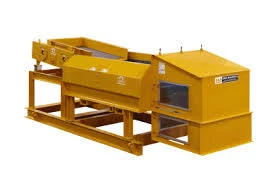

تشرینی دووەم . 21, 2024 21:43 Back to list
Understanding E-Manifest The Future of Waste Management
In today’s digital age, the reliance on technology has transformed numerous industries, and waste management is no exception. One of the most significant innovations in this sector is the advent of the Electronic Manifest, commonly referred to as e-manifest. This electronic document serves as a crucial tool for the tracking and management of hazardous waste, streamlining processes that were traditionally cumbersome and paper-heavy.
Understanding E-Manifest The Future of Waste Management
One of the primary benefits of e-manifesting is that it significantly reduces the reliance on paper. With e-manifests, waste generators can prepare, sign, and distribute manifest documents electronically. This transition not only saves trees but also minimizes the risk of errors associated with handwriting and manual processing. Moreover, the electronic system allows real-time data entry and updates, ensuring that all parties involved in the transportation and disposal of hazardous waste have access to the most current information.

Another critical advantage of e-manifesting is improved tracking capabilities. The e-manifest system enables waste generators, transporters, and treatment facilities to monitor the movement of hazardous waste throughout its lifecycle. This enhanced visibility helps ensure compliance with regulatory requirements and facilitates efficient waste management practices. In case of an emergency or spillage, having real-time tracking information allows for quick responses and mitigates potential environmental hazards.
Additionally, e-manifesting fosters greater accountability and transparency in the waste management process. Each party involved—whether it’s the generator, transporter, or receiving facility—can track their responsibilities and ensure that they are complying with the legal regulations set forth by the EPA. This transparency not only helps in meeting compliance requirements but also builds trust among stakeholders, including regulatory bodies and local communities.
Despite its numerous benefits, the transition to e-manifesting does present challenges. Some facilities and generators may face difficulties in adopting the new technology, particularly those that are accustomed to traditional methods. However, training programs and resources provided by the EPA and various waste management organizations can assist in easing this transition.
In conclusion, the e-manifest represents a significant leap forward in the management of hazardous waste. By moving from paper to digital, it enhances accuracy, accountability, and efficiency in tracking waste. As both the public and private sectors increasingly recognize the value of this innovative approach, e-manifesting is set to play a crucial role in the sustainable future of waste management. As technology continues to evolve, the potential for even more improvements in this area is promising, paving the way for a cleaner and safer environment for generations to come.
Latest news
Eddy Separator for Non-Ferrous Metals
NewsAug.22,2025
E Waste Bin for Collected Spray Cans: Sustainable Disposal Solutions
NewsAug.22,2025
Dual Shaft Shredder with Adjustable Blade Gaps
NewsAug.22,2025
Hammer Crusher Machine With Secondary Crushing
NewsAug.22,2025
Copper Granulator Our Promise of Recycling Excellence
NewsAug.22,2025
Industrial Shredders Crafted for E-Waste Recycling
NewsAug.22,2025